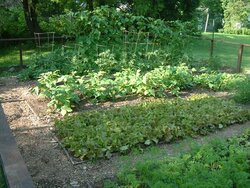I want to build some raised beds out of wood to grow vegatables. I have clay soil and I find that the vegies grow better in raised beds...they seem to drain better and are warmer. I have read several articles on line that you can use treated lumber and it's safe.
I have my doubts. I am looking for opinions. Thanks
I have my doubts. I am looking for opinions. Thanks


